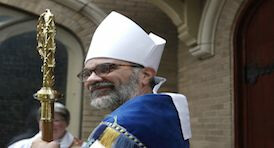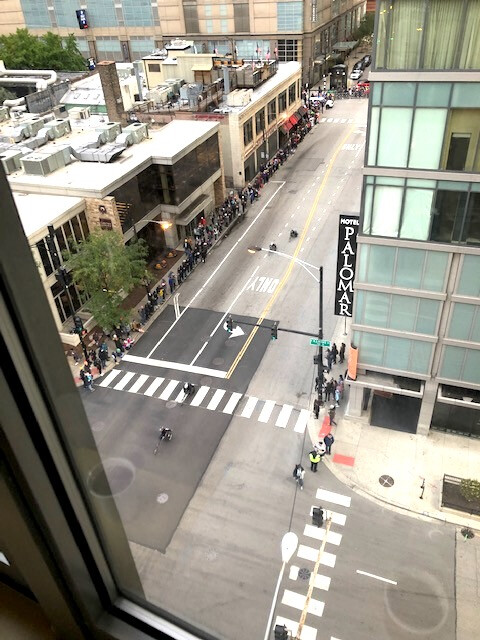Jackson Pollock Theology

After I had used an example from modern science in a sermon, my engineer brother said there should be some rule forbidding such misuse, some quality control mechanism for sermon references on subjects we know nothing about. We would all be in trouble! Something similar applies to a blog of mine on modern art, but fools rush in….
I recently went to see the Jackson Pollock exhibit about which I am unencumbered by knowledge. But I can say this much - his art has a relationship to chaos, not only that found in the world, but also that found in his own heart (by his own account). When a mentor suggested he do more study and painting of nature, he famously replied ‘I am nature.’ I believe it was both to its and his chaos, as well as the patterns found therein, that he was referring. And so he arrived, at one stage at least, at his famous method, at throwing and spilling paint on the canvas in what seems to many to be a random way. But even in this questions are raised: how does chance play into art? And chaos? Is this the reflection of his manic depression or the other way around? In all this he is a typical modern, coming in some way to terms with randomness and chaos, at the same time trying to harness these forces within himself in his art. As such he is typical also of the romanticist impulse, to look not to order but to its opposite. He is valuable at the very least as an expression of our time and culture.
What are we as Christians to make of all this, the chaotic in the world, and the artistic attraction to these forces? The great revisionist theologian Paul Tillich flirted with such forces in his doctrine of the Spirit, but this proved a symptom in his own spiritual collapse. First of all, the Christian takes a sympathetic and yet a hard look at the world as it is. He or she knows that, as Paul said, there are no idols but there are, behind them, demons. He or she knows that we are to distrust chaos, since God is a God of order, but that we are to distrust human order too, since it can be prone to the ‘powers and principalities.’ He or she knows that the artist’s impulse too can be ‘taken captive for Christ.’ He or she knows that God has in His hand everything, chaos as well as order, the rebellious as well as the obedient, for He will in the end be ‘All in All.’ He imposes order on chaos at the first creation, and he dives down into chaos and tames it in the second. Neither ordered beauty nor chaotic beauty equals the revelation of God - He can use whatever He wills, and He has the last word. Perfect beauty, the power of the Spirit, the rushing of waters, the cascading harmonies, the earthquake of life up from death, ecstasy and adoration- these are the qualities of heaven. In God alone order and surging life are one. For the intimation of such things the artist has a place, for the subject is beyond mere reason, but it requires God’s gift for such are to be in the service of the God who slew Rahab of the chaotic deep on the way to Easter.
Peace,
+GRS



